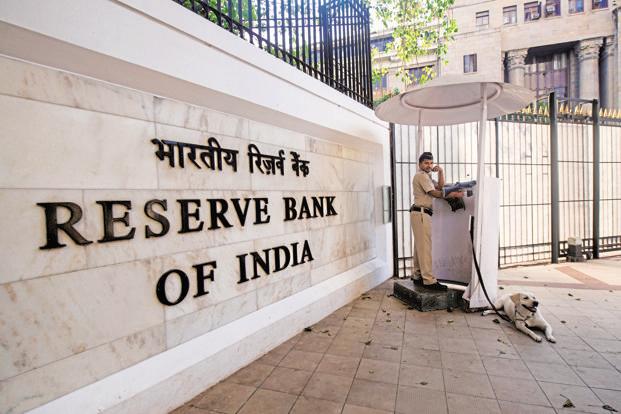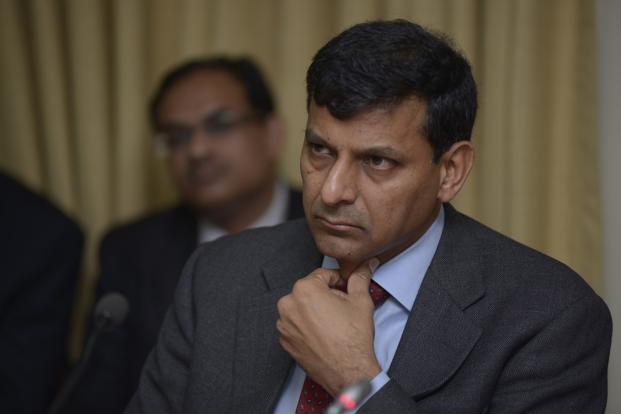On Tuesday, a group of five men and one woman will decide whether the Reserve Bank of India (RBI) should cut its policy rate—a decision which had all along been the prerogative of one person: the RBI governor. Indeed, there’s been a technical advisory committee (TAC) since June 2009 to give inputs for policymaking but, unlike the six-member monetary policy committee (MPC), it did not have statutory status and hence the governor was under no obligation to accept its suggestions. On most occasions in the past seven years, the RBI has not done what most members of TAC have wanted it to do.
The MPC, constituted through a government notification late last week, amending the RBI Act, has three members each from the RBI and academia. Armed with data provided by the central bank’s research wings, it will brainstorm on Monday and in the first half of Tuesday, before the policy is announced after lunch. The RBI governor will continue to play a critical role in the decision-making as he has a casting vote in case of a tie.
I am not entirely familiar with the stance of each of the six members of the MPC, including those from the RBI.
The youngest of the lot, Chetan Ghate, an associate professor at Indian Statistical Institute, New Delhi, was a member of the TAC. He was also a member of the expert group that suggested a committee-based monetary management system with an explicit inflation target. A firm believer in inflation targeting, he seems to be a ‘hawk’.
Ravindra H. Dholakia, a professor of economics at the Indian Institute of Management, Ahmedabad, has policymaking experience in both state and central governments. His belief is “deliberate disinflation” affects economic growth. In monetary policy parlance, he is a ‘dove’.
Pami Dua, director, Delhi School of Economics, has done seminal work in business cycle analysis, time series econometrics and forecasting—the core of macroeconomics—but I am not aware of her views on inflation-interest rate dynamics.
From among the insiders, RBI executive director Michael Patra, who has been playing a critical role in monetary policymaking, is known to be a ‘hawk’. Deputy governor R. Gandhi’s stance is not well known as he was never part of the monetary policymaking exercise.
Former RBI governor Raghuram Rajan once said, “I don’t know what you want to call me… Santa Claus… you want to call me hawk… My name is Raghuram Rajan and I do what I do.” How about his successor Urjit Patel, who will chair the MPC meeting? In Patel’s own words, in Indian central bank, they are neither doves nor hawks… “but owls who remain vigilant when others are resting”. Patel, who headed the panel that made inflation the nominal anchor for the monetary policy framework and recommend the constitution of the MPC, had said that when he was a deputy governor.
Many believe that Patel belongs to the Rajan school of thought who would not rest till inflation is slain. It’s not easy to pinpoint his exact stance as he hardly spoke his mind as a deputy governor at the post-policy conferences during the Rajan regime. Since the MPC members are expected to take time to settle down, this policy could turn out to be Patel’s policy.
Will he cut the rate?
At this point, the chances are 50:50. There is bound to be a rate cut soon, but the question is whether it will happen now or in December. There are equally strong arguments in favour of both—doing it now or two months later.
The last time the RBI cut its policy rate was in April—by half-a-percentage point to 6.5%, a five-year low. Since then, there has been status quo as the central bank was seeing upside risks to its 5% inflation target in March 2017.
It’s now fairly certain that the upside risks have erased. The retail inflation, which started rising from April till July (from 5.39% to 6.07%) before dropping to 5.05% in August, may drop to 4.5% in September-October and even less after that and settle at less than 5% by March 2017, below the RBI’s target.
Of course, there are arguments that one can’t be so sure about the inflation trajectory as there’s no clarity on the impact of the impending goods and services tax (GST) on inflation. Similarly, the house rent allowance hike of central government employees, as recommended by the Seventh Pay Commission, may take effect now and this will impact inflation.
So, RBI should wait and watch inflation coming down further before cutting the policy rate in December. Also, by that time any volatility that may hit the market on account of likely outflow of foreign currency deposits will be ironed out. Indian banks raised around $26 billion between September and December 2013 in the form of Foreign Currency Non-Resident (Bank) or FCNR(B) deposits to support a depreciating rupee in the wake of the so-called taper tantrums in the US.
However, a healthy flow of foreign money (the foreign investment flow in the equity market in the first nine months of 2016 is more than double of the entire last year) is ensuring that the FCNR(B) outflow will hardly have any impact. The bond market has already priced in a rate cut with the yield on the 10-year benchmark paper dropping to 6.75% before settling at around 6.82% last Friday, a seven-year low.
Besides, the US Federal Reserve left its rate steady in September, but there is no certainty that it will do so in December as well. Hence, biting the bullet now could be a better option than in December, just ahead of the Federal Reserve’s policy meeting.
The only risk for Patel is a rate cut now may put a question mark on his credibility, as the market may think that the new governor has succumbed to pressure from the government. But this apprehension is misplaced as the MPC will take the call and not the governor alone. If the rate cut doesn’t happen now, we will definitely see a dovish statement, coupled with a change in inflation outlook—from upside to downside risks to fiscal year-end projection and wait till December for the policy rate to come down.
Postscript: My last week’s column, How corrupt are our bankers? evoked strong reactions from various quarters. Many readers loved it and many were upset with it.
Broadly, they have five points:
—The column has sensationalized corruption in banking, which is an exception and not the norm.
—It painted all bankers with the same brush.
—Private banks and even other professions, including journalism, have corrupt professionals, which it overlooked.
—It did not recognize the fact that the state-owned banks have done a great service of nation-building.
—And, finally, if I know of any corrupt bankers, I should expose them to agencies such as the Central Bureau of Investigation (CBI) instead of writing about it.
Here are my brief answers:
—There was no intention to sensationalize a serious issue; every character and incident referred to in the column is real. Incidentally, one bank chief was sacked and another former chief was sued by the CBI last week.
—Indeed, there are impeccably honest bankers; I have not tarred all with the same brush. The column spoke about certain banks which have a culture of transparency and free flow of information.
—Of course, there are corrupt professionals in every field but it’s absolutely unacceptable in banking as it deals with money and public trust. Corruption in banking is like murder in police custody.
—Indeed, PSU banks have been doing a great service for nation-building, but that does not give any banker the licence to be corrupt.
—Finally, a journalist’s job is very different from that of an informer for investigative agencies.



